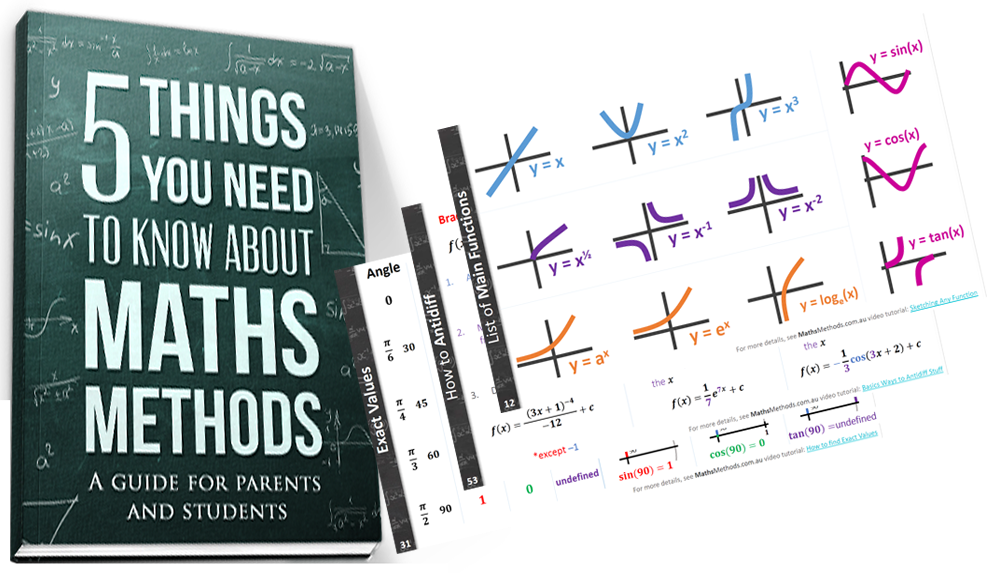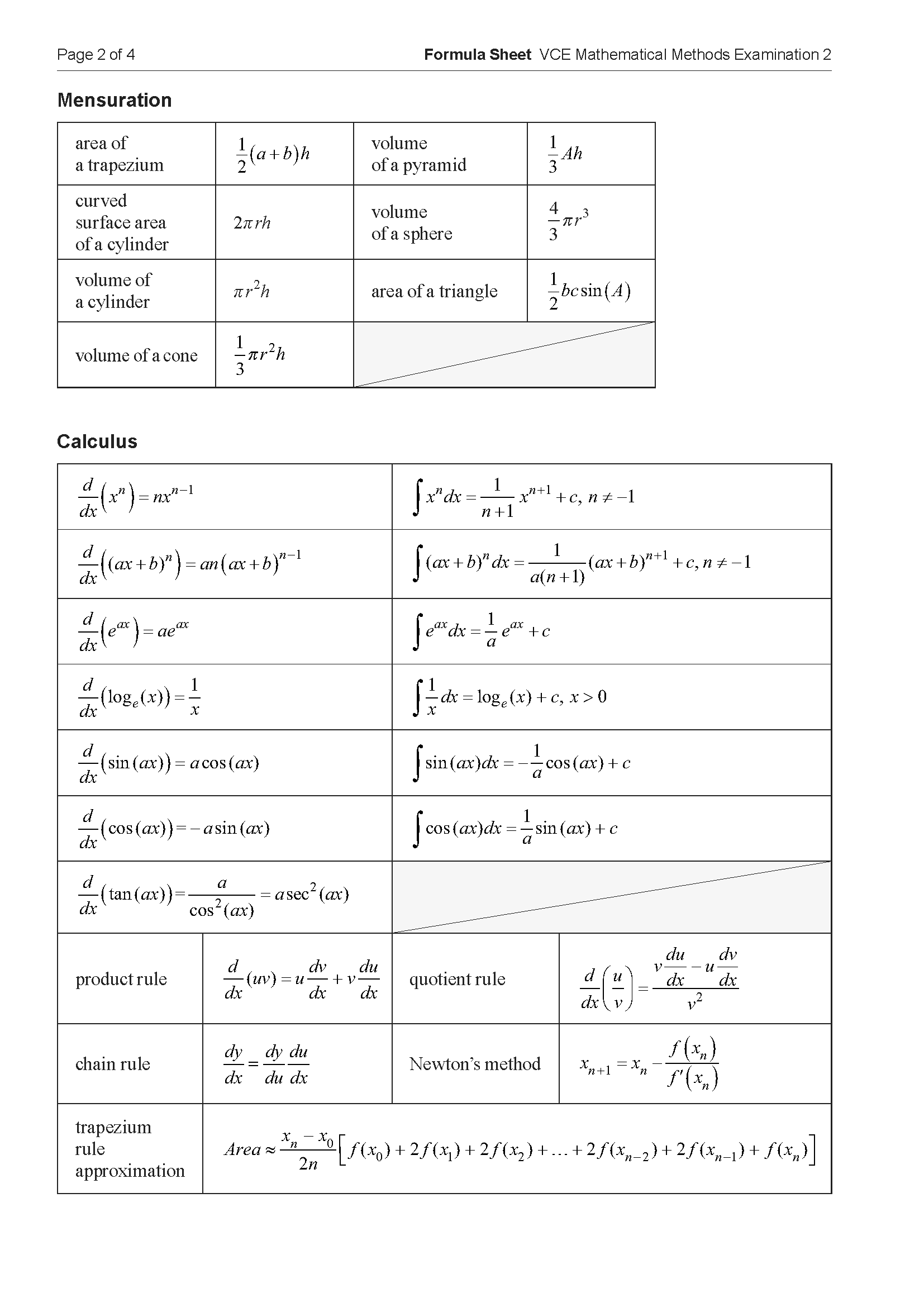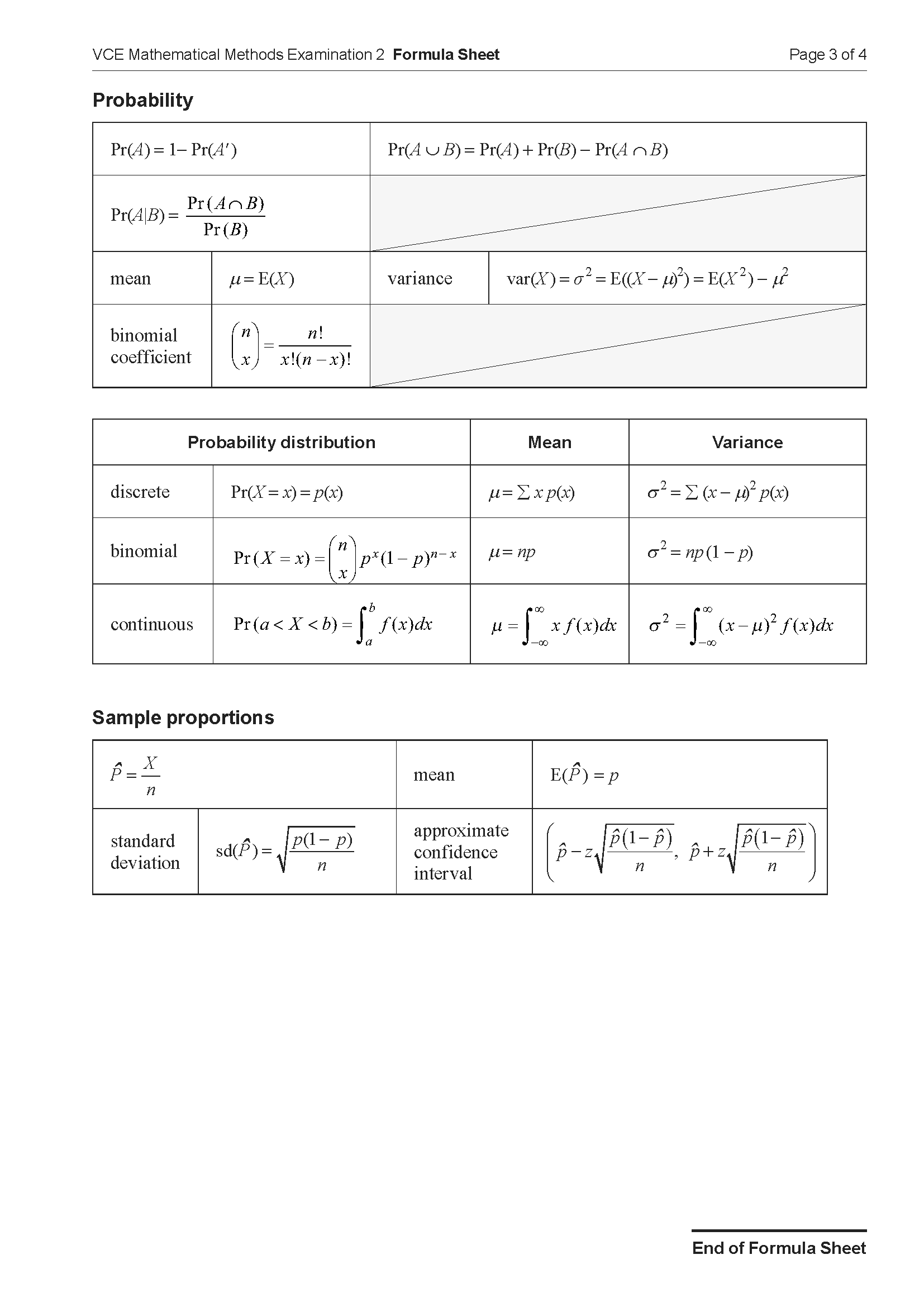VCE Methods Integral Calculus Application Task 2
Number of marks: 11
Reading time: 2 minutes
Writing time: 16 minutes
Section B – Calculator Allowed
Instructions
• Answer all questions in the spaces provided.
• Write your responses in English.
• In questions where a numerical answer is required, an exact value must be given unless otherwise specified.
• In questions where more than one mark is available, appropriate working must be shown.
• Unless otherwise indicated, the diagrams in this book are not drawn to scale.
Let \( f : \mathbb{R} \rightarrow \mathbb{R} \), \( f(x) = e^x + e^{-x} \) and \( g : \mathbb{R} \rightarrow \mathbb{R} \), \( g(x) = \frac{1}{2} f(2-x) \).
a. Complete a possible sequence of transformations to map \( f \) to \( g \). 2 marks
- Dilation of factor \( \frac{1}{2} \) from the x-axis.
Two functions \( g_1 \) and \( g_2 \) are created, both with the same rule as \( g \) but with distinct domains, such that \( g_1 \) is strictly increasing and \( g_2 \) is strictly decreasing.
b. Give the domain and range for the inverse of \( g_1 \). 2 marks
Shown below is the graph of \( g \), the inverses of \( g_1 \) and \( g_2 \), and the line \( y = x \).

The intersection points between the graphs of \( y = x \), \( y = g(x) \) and the inverses of \( g_1 \) and \( g_2 \), are labelled P and Q.
c. i. Find the coordinates of \( P \) and \( Q \), correct to two decimal places. 1 mark
ii. Find the area of the region bound by the graphs of \( g \), the inverse of \( g_1 \) and the inverse of \( g_2 \). Give your answer correct to two decimal places. 2 marks
Let \( h : \mathbb{R} \rightarrow \mathbb{R} \), \( h(x) = \frac{1}{k} f(k-x) \), where \( k \in (0, \infty) \).
d. The turning point of \( h \) always lies on the graph of the function \( y = 2x^n \), where \( n \) is an integer. Find the value of \( n \). 1 mark
Let \( h_1 : [k, \infty) \rightarrow \mathbb{R} \), \( h_1(x) = h(x) \). The rule for the inverse of \( h_1 \) is \( y = \log_e\left( \frac{k}{2}x + \frac{1}{2} \sqrt{k^2 x^2 - 4} \right) + k \).
e. What is the smallest value of \( k \) such that \( h \) will intersect with the inverse of \( h_1 \)? Give your answer correct to two decimal places. 1 mark
It is possible for the graphs of \( h \) and the inverse of \( h_1 \) to intersect twice. This occurs when \( k = 5 \).
f. Find the area of the region bound by the graphs of \( h \) and the inverse of \( h_1 \), when \( k = 5 \). Give your answer correct to two decimal places. 2 marks
End of examination questions
VCE is a registered trademark of the VCAA. The VCAA does not endorse or make any warranties regarding this study resource. Past VCE exams and related content can be accessed directly at www.vcaa.vic.edu.au


